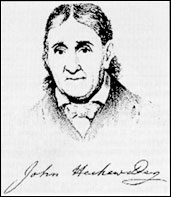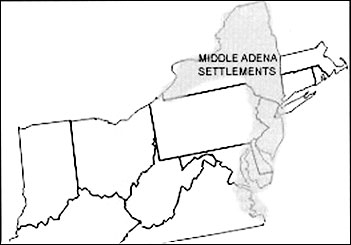Giants and Ancient North American Warfare
|
The Legend From Henry Schoolcraft, noted scholar on the subject, we have this reference to a most antique and mysterious tribe or nation: The oldest tribe of the United States, of which there is a distinct tradition, were the Alleghans. The term is perpetuated in the principal chain of mountains traversing the country. This tribe, at an antique period, had the seat of their power in the Ohio valley and its confluent streams, which were the sites of their numerous towns and villages. They appear originally to have borne the name of Alli, or Alleg, and hence the names of Talligewi and Allegewi. By adding to the radical of this word the particle hany or ghany, meaning river, they described the principal scene of their residence namely, the Allegheny, or River of the Alleghans, now called Ohio. The word Ohio is of Iroquois origin, and of a far later period; having been bestowed by them after their conquest of the country, in alliance with the Lenapees, or ancient Delawares. (Phi. Trans.) The term was applied to the entire river, from its confluence with the Mississippi, to its origin in the broad spurs of the Alleghanies, in New York and Pennsylvania; and the designation, to its sources, is still continued in use by that people.
Many wonderful things are told of this famous people. They are said to have been remarkably tall and stout, and there is a tradition that there were giants among them, people of a much larger size than the tallest of the Lenape.Many centuries ago, the Lenni Lenape, for some undisclosed reason, moved en masse from the western half of the present day United States, toward the east. As the legend goes, these people found themselves at the shore of the Mississippi, the white man's enunciation of their Namesi Sipu, River of Fish. There they met up with the Mengwe, who had come from a bit further north and closer to the source of the Namesi Sipu, perhaps the present-day Missouri. It was a meeting of destiny, and was, at that time, a peaceful one. The Lenape sent out their scouts across the broad current. James A. Jones, another writer of the time, relates of the occasion of the safe return of these "spies" for the Lenape, having reconnoitered the eastern side of the Mississippi: They told, that they had found the further bank of the River of Fish inhabited by a very powerful people, who dwelt in great villages, surrounded by high walls. They were very tall, so tall that the head of the tallest Lenape could not reach their arms, and their women were of higher stature and heavier limbs than the loftiest and largest man in the confederate nations. They were called the Allegewi, and were men delighting in red and black paint, and the shrill war-whoop, and the strife of the spear. Such was the relation and made by spies to their countrymen.The legend moves very quickly then. In the words of Heckewelder: ...They sent a message to the Allegewi to request permission to settle themselves in their neighborhood. This was refused them, but they obtained leave to pass through the country and seek a settlement farther to the eastward. They accordingly began to cross the Namesi Sipu, when the Allegewi, seeing that their numbers were so great, and in fact they consisted of many thousands, made a furious attack on those that had crossed, threatening them all with destruction, if they dared persist in coming over to their side of the river. Fired at the treachery of these people, and the great loss of men they had sustained, and besides, not being prepared for a conflict, the Lenape consulted on what was to be done; whether to retreat in the best manner they could, or try their strength, and let the enemy see they were not cowards.While one should always be aware that history as related by the victorious side may not be history as it actually occurred, never the less the resultant war is related as eventually becoming an overwhelming loss for the Alleghans. Whether the Lenape were considered deceitful in not disclosing their vast hoard is perhaps irrelevant. While one account says the Allegewi were extirpated, another relates of their escape down the Mississippi. The Lenni Lenape, having made an alliance with the Mengwe, took many years, and through a great loss of people, claim to have finally defeated the
As the legend completes itself, the two triumphant tribes lived together in peace and cooperation for many centuries. But having done this, it is related that the lands to the east were found to be uninhabited by any enemies, and that they were rich and beautiful, the destiny of the Great Spirit for the people. On this account, they ultimately moved eastward, leaving again the Ohio country comparatively vacant. Out of these ancient people of the Lenape (who are assumed to have bred with the Mengwe only to a lesser extent at the beginning), no less than 40 tribes are said thereafter to have arisen. In hindsight, not only would this have required a great number of generations, but also it may explain the difficulty in DNA pattern matching with an ancestral people living millennia before. As for the Mengwe, their destiny as the Iroquois is well known, being that of the Confederation of the Five Tribes, and then the Tuscorora [sic]. Later of course, the Lenni Lenape, as the Delaware, became bitter enemies with the Iroquois. David Cusick, a Tuscorora [sic] by birth, writes in 1825 that among the legends of ancient stock, there was a powerful tribe called Ronnongwetowanca. They were giants, and had a "considerable habitation." He says that when the Great Spirit made the people, some of them became giants. The giants were said to have had a "silly" mode of attack, waiting until their intended victim was not expecting anything. After a time, and having endured the outrages of these giants, it is said that the people ended together, and through the final force of about 800 warriors, successfully annihilated all of the abhorrent Ronnongwetowanca people. After that, it was said that there were no giants anywhere. This was supposed to have happened around 2,500 winters before Columbus discovered America, i.e. around 1000 B.C.E.-the time that the Adena seem to have arrive in the Ohio Valley. There appears to be coincidental links, combining legend and archaeology, between the possible existence of a great nation having giants among their people, their struggle in war, and the beginning time of the Adena in the Ohio Valley.
The Mound Builders
Such an after-battle chore would be the warriors' choice. Mound building of this type is as ancient a practice as can be imagined. It was not only clean, but was practical, and probably respectable as well.
Mounds wherein the dead were placed and covered with earth to avoid open decay and the diseases associated with it are as easy to accept as yesterday's news. This is a possible explanation for the origin of mounds for the honored dead-the slain heroes and men sacrificed in discharging the dreadful arts of war. Through the eyes of the participant warriors, such a battlefield practice may have served as a fitting memorial, reminding them of their struggles. Later, it could have been reenacted in quieter surroundings by the Adena. Such mounds or cemeteries as quoted above, holding the remains of people of above average stature, even giants, possibly pushes the practice of moundbuilding back into an undisclosed period of prehistory. |
Go Back


